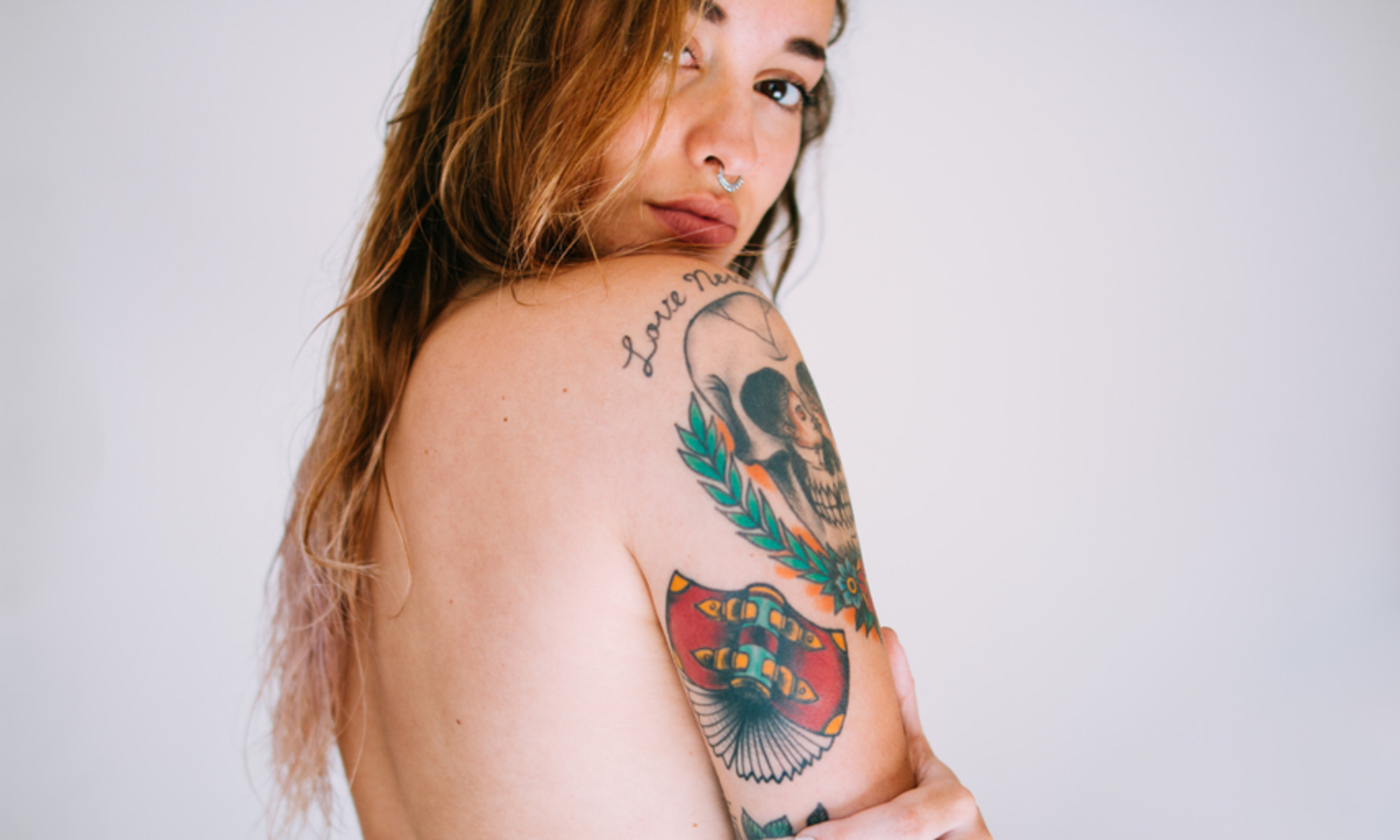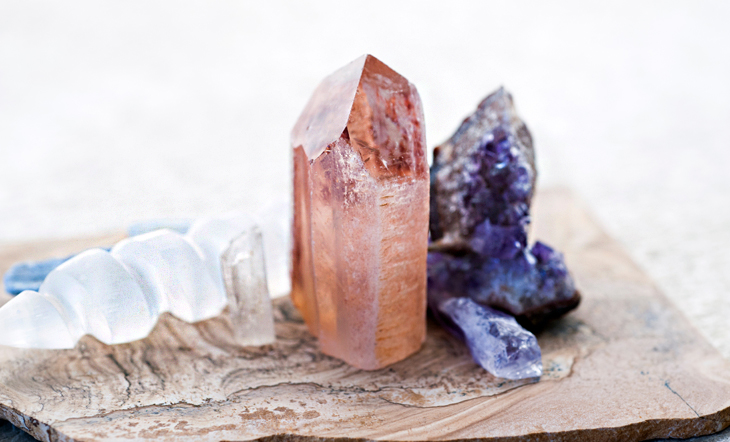Don't Do This For One Month After Getting A Tattoo, Experts Say
Everything you need to know in one place.


Beauty & Health Editor
Beauty & Health Editor
Hannah Frye is the Beauty & Health Editor at mindbodygreen. She has a B.S. in journalism and a minor in women’s, gender, and queer studies from California Polytechnic State University, San Luis Obispo. Hannah has written across lifestyle sections including beauty, women’s health, mental health, sustainability, social media trends, and more. She previously worked for Almost 30, a top-rated health and wellness podcast. In her current role, Hannah reports on the latest beauty trends and innovations, women’s health research, brain health news, and plenty more.
November 04, 2024 We carefully vet all products and services featured on mindbodygreen using our Our selections are never influenced by the commissions earned from our links. Just like dramatic shifts in your hairstyle or makeup routine, new tattoos can make you feel refreshed and inspired. There's certainly an odd pressure to pick the perfect design and find the best artist out there due to the permanent factor—but, you too are in control of how your tattoo turns out. The part you play: Aftercare. While the classic petrolatum jelly and antibacterial soap combo have been around for decades, there’s more to it than just that. So if you want your new tattoo to look its best (and age well) keep reading.
Aftercare instructions
We’re going to jump right into what you should and shouldn’t do right after you get a new tattoo. Of course, we will preface this with the fact that each tattoo is unique and you should ask your artist about the following protocol to ensure they’re on board. But, the following routine is fairly universal.
1.
Address lifestyle factors
We’ll get into topical aftercare next, but first, we have to mention the lengthy list of no-nos during your tattoo healing period. These lifestyle decisions can make your break your tattoo just as much as what you use on the skin post-appointment, so don’t ignore them.
2.
Remove your wrap after 1-5 days
Some tattoo artists will apply a clear adhesive wrap over your tattoo, also casually referred to as a “second skin,” bandage. You’ll want to keep this wrap on anywhere from one to five days, not exceeding the latter unless your artist tells you otherwise.
“Although keeping it covered will help to keep it from drying, keeping it covered for a prolonged period can contribute to an overgrowth of natural bacteria and result in irritation or infection,” board-certified dermatologist Elliot Love, D.O. tells mbg.
The range depends on the type of tattoo you get, your artist's recommendation, and personal preference—as the bandage can become annoying when it starts to peel up.
One more thing: Some people may experience an allergic reaction to the adhesive used on the bandage. You’ll know this is the case if you see red patches around the bandage or experience itch. Be sure to remove the bandage ASAP if that happens.
3.
Wash with unscented soap
Once your one to three days is up, it’s time to remove the bandage. Gently peel it off and use a washcloth to remove excess adhesive. Then, you’ll need to clean it—but not with just any soap.
“When cleaning your tattoo, it’s best to use the following: lukewarm water and an unscented, mild liquid soap,” professional tattoo artist at Atelier Eva in Brooklyn, New York Pilar Zurita tells mbg.
Be extra delicate when cleansing the skin and let it air dry (Zurita’s recommended method) or dab it with a clean towel if necessary.
After your initial cleanse post-wrap, stick to washing your tattoo once a day with unscented soap—unless you run into a unique situation where your tattoo gets visibly dirty, then give it another wash.
mbg pro tip
Remove your bandage after 1 to 5 days depending on your tattoo artist's recommendation and personal preference. Immediately after removing the wrap, cleanse the area with a gentle, unscented soap. For each day after this, only clean the affected area when you’re in the shower, sticking with unscented soap for the first month.
Here’s the big misconception: Petrolatum jelly isn’t the best product to lather on a fresh tattoo. “Mineral oil or petrolatum jelly is essentially suffocating to the skin, so it won't allow the tattoo to breathe,” Zurita says.
“You do need areas, like cuts, scars, and burns, to eventually breathe and get air so they can start the healing process,” she adds. Not only that, but these occlusive jelly products can actually pull up the ink on fine-line tattoos.
Plus, it’s not exactly environmentally friendly, which is enough of a reason to avoid its use: "Mineral oil is petrochemical derived, meaning it's environmentally irresponsible to use mineral oil when there are vegetable and fruit oils, like coconut oil, that are more sustainable," says clean cosmetic chemist Krupa Koestline about the ingredient.
Or, if you want something even simpler, look to plain botanical products like shea butter, coconut oil, or argan oil—but double-check to make sure these natural products don’t have essential oils mixed in as this could cause irritation.
mbg pro tip
Don’t use petrolatum jelly for immediate tattoo aftercare. Consider using products specifically formulated for tattoos or opt for a lightweight, natural hydrator (unscented) like shea butter, coconut oil, or argan oil. Apply your moisturizer to your tattoo at least twice daily for the first month.
Another common misconception: You should start using SPF right away. See, this is only half true—you should use sunscreen on your tattoo, but only after it’s fully healed (read: about a month).
“Sunscreen is either mineral or chemical, and either can irritate the tattoo,” Zurita notes. So while you should apply it elsewhere on the body, avoid the tattoo area specifically.
However, after the one-month mark, be sure to apply over the tattoo as well. Skipping SPF forever may lead to faded ink—so keep it on hand for future use.
mbg pro tip
Avoid letting sun exposure or sunscreen touch the new tattoo for the first month. After that, use SPF on your tattoo whenever you’re in the sun to prevent faded ink.
What to avoid
As a quick refresher, here are a few ingredients you should avoid for a month after getting your new tattoo:
Why tattoo aftercare matters
We know, this sounds like a lot of work just to ensure your tattoo heals properly—but trust us, it’s worth it. Neglecting these simple guidelines can wreak havoc on your ink and your skin.
“The most important immediate aftercare is to keep the area clean and moisturized, as infection and over-drying or scabbing can negatively affect the tattoos’ long-term appearance,” Love explains.
How long does a tattoo take to heal?
So how long does it take for your tattoo to heal? The answer isn’t black and white. Healing time can change depending on the size and location of your tattoo—fine-line artwork tends to heal faster than tattoos with loads of shading, for example.
“Healing times also can differ from person to person depending on their body's ability to heal itself,” Love adds.
But generally speaking, Love says your tattoo should be healed within a week or two. You’ll know your tattoo is still actively healing if it’s shiny, peeling, raised, or you find the area gets irritated easily.
So why make all the fuss for up to a month? Again, it’s better to be safe than sorry, and some people naturally heal slower than others—plus, one section of the tattoo may heal faster than the rest, and following protocol will ensure the healed tattoo is balanced and even.
Summary
Tattoos take 1-2 weeks to heal
Possible complications & cautions
The healing process should be fairly painless—if it’s not, you might have an infection on your hands. Zurita notes the following signs as possible complications and reasons to visit your tattoo artist or a dermatoligist:
FAQ
Tattoo aftercare first 48 hours?
If your tattoo artist gave you a bandage wrap, leave it on for at least one day, and a maximum of five days. After you remove the bandage, wash your tattoo with fragrance-free gentle soap and let it air dry. Then, apply a fragrance-free moisturizer.
Tattoo aftercare day by day?
If your tattoo artist gave you a bandage wrap, leave it on for at least one day, and a maximum of five days. After you remove the bandage, wash your tattoo with fragrance-free gentle soap and let it air dry. Then, apply a fragrance-free moisturizer. Wash your tattoo once daily after your initial cleanse and apply moisturizer at least twice a day for the first month.
What can I use for tattoo aftercare?
For cleansing purposes, use a fragrance-free, gentle cleanser once daily on your new tattoo. After you cleanse, apply a designated tattoo aftercare product like the Mad Rabbit Soothing Gel or any lightweight fragrance-free moisturizer. You can also use pure botanical hydrators like shea butter, coconut oil, or Argan oil.
The takeaway
When you get a new tattoo, leave the clear bandage on for at least one day. After that, cleanse the area with unscented soap and hydrate the skin with a fragrance-free lotion, aftercare product, or botanical hydrator like coconut oil or shea butter.
Remember to limit sweating for the first two weeks and skip any swimming for a full month post-appintment. Ready to shop for fragrance-free products? Start with these body washes and body lotions.

 UsenB
UsenB 
































